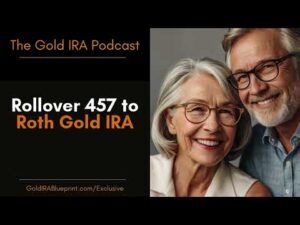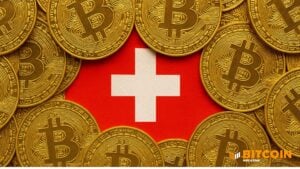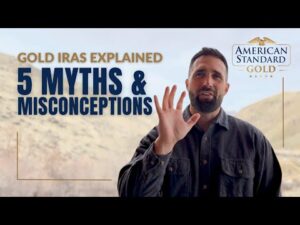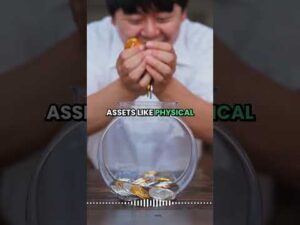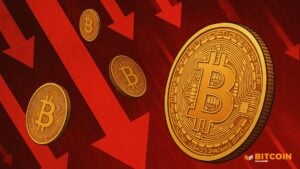
Veteran trader Peter Brandt believes that the expected approval of spot Bitcoin exchange-traded funds (ETF) could be a classic example of a "buy the rumor, sell the news" event. Brandt, who has years of experience as a professional trader, stated that this conclusion is partly based on the enthusiasm of Bitcoin maximalists for the approval of spot Bitcoin ETFs.
Understanding "Buy the Rumor, Sell the News"
In traditional stock trading, the phrase "buy the rumor, sell the news" refers to a strategy where traders buy a security based on speculation about an upcoming event and sell it when the event is announced. Some observers believe that the approval of spot Bitcoin ETFs by the U.S. Securities and Exchange Commission (SEC) could be seen as such an event.
Bitcoin Maximalists and Government Influence
In a post on X, Brandt points out the irony of Bitcoin maximalists being unfazed by the potential government influence or interference with crypto markets. He questions how Bitcoin enthusiasts, who believe in the decentralized nature of the cryptocurrency, can view the SEC and ETFs as the savior of their financial future.
ETF Hype and Old-Time Traders
Brandt compares the current hype around ETFs to a guide often followed by experienced traders. According to this guide, when the average person is eager to invest, it may be a signal for seasoned traders to exit the market. He suggests that the surge in Bitcoin's value driven by ETF hype could be a warning sign for traders to consider selling.
However, Brandt acknowledges that his observations about Bitcoin ETFs may not be accurate and invites those who are more knowledgeable to share their thoughts on the matter.
Varying Opinions
Responses to Brandt's post on X have varied. Some users, like Abel Chris, disagree with Brandt's assertions and believe that if the SEC approves multiple spot Bitcoin ETFs, the price of Bitcoin will continue to rise. Chris suggests that Bitcoin adoption by countries to support their currency could be the next phase.
On the other hand, Cristian Palusci implies that Brandt's views on ETFs may only apply to the average European or American individual. Bitcoiners from other parts of the world are primarily interested in using Bitcoin as a parallel financial system to protect their savings from the devaluation of local fiat currencies.
Ultimately, the question remains: do you agree with Peter Brandt's comments about Bitcoin maximalists? Share your thoughts in the comments section below.
Frequently Asked Questions
How much gold do you need in your portfolio?
The amount that you want to invest will dictate how much money it takes. A small investment of $5k-10k would be a great option if you are looking to start small. You could then rent out desks and office space as your business grows. This will allow you to pay rent monthly, and not worry about it all at once. You only pay one month.
It's also important to determine what type business you'll run. My company is a website creator. We charge our clients about $1000-2000 per monthly depending on what they order. If you are doing this type of thing, it is important to think about how much you can expect from each client.
Because freelance work pays freelancers, you won't likely get a monthly income if you do freelance work. You might get paid only once every six months.
You need to determine what kind or income you want before you decide how much of it you will need.
I recommend starting with $1k to $2k of gold, and then growing from there.
What precious metals could you invest in to retire?
The best precious metal investments are gold and silver. Both can be easily bought and sold, and have been around since forever. You should add them to your portfolio if you are looking to diversify.
Gold: One of the oldest forms of currency, gold, is one of mankind's most valuable. It is stable and very secure. It's a great way to protect wealth in times of uncertainty.
Silver: Silver has been a favorite among investors for years. This is a great choice for people who want to avoid volatility. Unlike gold, silver tends to go up instead of down.
Platinium: Platinum is another form of precious metal that's becoming increasingly popular. It's resistant to corrosion and durable, similar to gold and silver. It's however much more costly than any of its counterparts.
Rhodium: Rhodium is used in catalytic converters. It is also used for jewelry making. It is also very affordable in comparison to other types.
Palladium: Palladium, which is a form of platinum, is less common than platinum. It's also more affordable. It is a preferred choice among investors who are looking to add precious materials to their portfolios.
What is the best precious-metal to invest?
The answer to this question depends on how much risk you are willing to take and what type of return you want. Although gold has been considered a safe investment, it is not always the most lucrative. Gold may not be right for you if you want quick profits. If you have time and patience, you should consider investing in silver instead.
If you're not looking to make quick money, gold is probably your best choice. Silver may be a better option for investors who want long-term steady returns.
How to Open a Precious Metal IRA?
The first step is to decide if you want an Individual Retirement Account (IRA). You must complete Form 8606 to open an account. For you to determine the type and eligibility for which IRA, you need Form 5204. This form should be completed within 60 days after opening the account. Once this has been completed, you can begin investing. You can also contribute directly to your paycheck via payroll deduction.
You must complete Form 8903 if you choose a Roth IRA. The process for an ordinary IRA will not be affected.
To qualify for a precious-metals IRA, you'll need to meet some requirements. You must be at least 18 years of age and have earned income to qualify for a precious metals IRA. For any tax year, your earnings must not exceed $110,000 ($220,000 for married filing jointly). Contributions must be made on a regular basis. These rules apply to contributions made directly or through employer sponsorship.
A precious metals IRA can be used to invest in palladium or platinum, gold, silver, palladium or rhodium. However, you can't purchase physical bullion. You won't have the ability to trade stocks or bonds.
You can also use your precious metallics IRA to invest in companies that deal with precious metals. This option is available from some IRA providers.
There are two main drawbacks to investing through an IRA in precious metallics. First, they're not as liquid as stocks or bonds. It is therefore harder to sell them when required. Second, they are not able to generate dividends as stocks and bonds. Also, they don't generate dividends like stocks and bonds. You will eventually lose money rather than make it.
Statistics
- You can only purchase gold bars at least 99.5% purity. (forbes.com)
- This is a 15% margin that has shown no stable direction of growth but fluctuates seemingly at random. (smartasset.com)
- If you take distributions before hitting 59.5, you'll owe a 10% penalty on the amount withdrawn. (lendedu.com)
- Gold is considered a collectible, and profits from a sale are taxed at a maximum rate of 28 percent. (aarp.org)
- Contribution limits$6,000 (49 and under) $7,000 (50 and up)$6,000 (49 and under) $7,000 (50 and up)$58,000 or 25% of your annual compensation (whichever is smaller) (lendedu.com)






